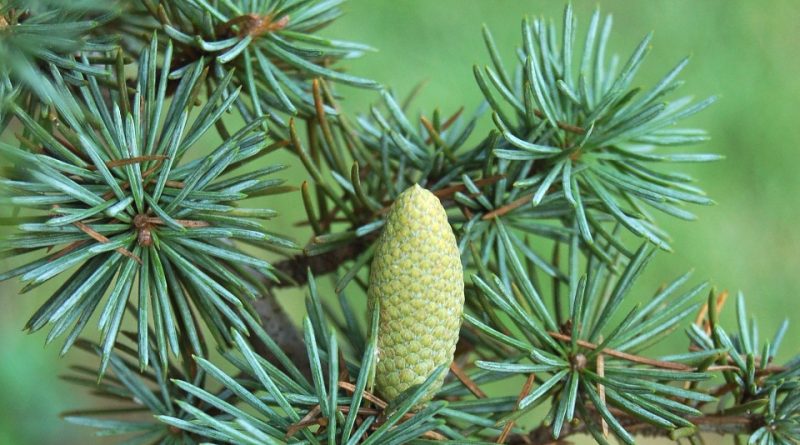Cedrus atlantica
Cedrus atlantica
The Atlas cedar, (Cedrus atlantica (Endl.) Manetti) is an arboreal species belonging to the Pinaceae family.
Systematics –
From a systematic point of view it belongs to the Eukaryota Domain, Kingdom Plantae, Pinophyta Division, Pinopsida Class, Pinales Order, Pinaceae Family and therefore to the Cedrus Genus and to the C. Atlantic species.
Etymology –
The term Cedrus derives from the Greek κέδρος kédros, of probable Semitic origin, assonant with the Hebrew héder ornament, majesty and with the Arabic kedre power. The specific Atlantic epithet comes from Atlas, Mount of Mauritania, at the western end of North Africa.
Geographic Distribution and Habitat –
The Cedrus atlantica is a species native to Morocco and Algeria. In fact it is very widespread in the Atlas mountain range, where it is located in the coolest slopes facing the north between 1,500 and 2,200 meters. It was introduced, around the middle of the nineteenth century, in Europe where it is found, especially its glauca variety, in parks or private gardens as an ornamental plant.
Description –
The Cedrus atlantica is a species that spontaneously can reach even 45 meters. It is recognized for its conical posture, with erect and pyramidal crown which tends to expand with age. The trunk, not always straight, cylindrical, has a gray / brown bark, which is cracked and cracked. Leaves, needle-like, evergreen with those of brachiblasts gathered in tufts of 20-45 needles and those of single macroblasts and spirally arranged around the branch, with length ranging from 1.5 to 2.5 cm. The cones appear in autumn: the masculine ones, first yellowish and then brown, are 3-4 centimeters long, erect and fall after releasing the pollen; the feminine ones, little more than a centimeter long and of a greenish color, take two years to turn into brown pine cones, barreled, erect that get rid of when ripe. This plant fruits at the age of about 30 years.
Cultivation –
The Cedrus atlantica can be propagated by seed or by cuttings and is the best rootstock among the cedars. The best soil for growth is quite variable, even in terms of pH. It is a plant that has a really good rusticity. During the winter it tolerates temperatures between -19 and -15 ° C. The plant adapts well to the most disparate conditions of development therefore does not require constant crop care. The plants are grown for ornamentation especially in the variety “glauca” which are silver-gray leaves.
Uses and Traditions –
The Cedar of the Atlas, like other species of Cedar, provides a precious, durable and fragrant wood that is used for construction, furniture, sculptures and cabinet-making;
Preparation Mode –
From the wood of the Atlas cedar an essential oil is obtained, mainly used for the respiratory tract but also for the care of hair and skin and as a natural insecticide. For more information you can consult the following form.
Guido Bissanti
Sources
– Wikipedia, the free encyclopedia.
– Treben M., 2000. Health from the Pharmacy of the Lord, Advice and experience with medicinal herbs, Ennsthaler Publisher
– Pignatti S., 1982. Flora of Italy, Edagricole, Bologna.
– Conti F., Abbate G., Alessandrini A., Blasi C. (edited by), 2005. An annotated checklist of the Italian vascular flora, Palombi Editore.
Warning: Pharmaceutical applications and alimurgical uses are indicated for informational purposes only and do not in any way represent a medical prescription; there is therefore no liability for their use for curative, aesthetic or food purposes.


